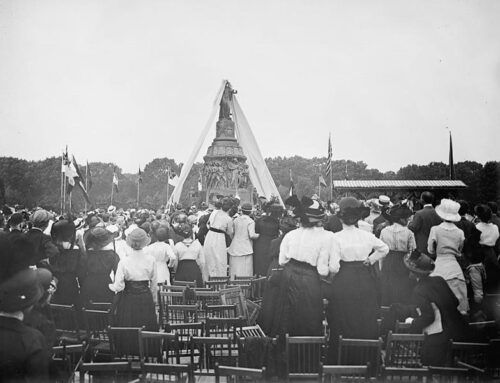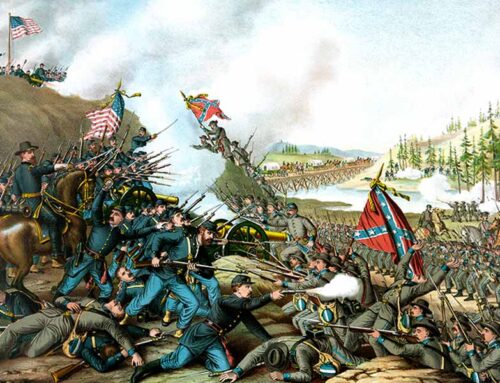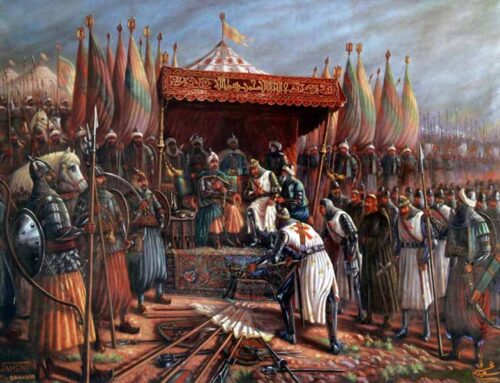Nast Cartoon Debuts the Republican Elephant, November 7, 1874
![]() articular national images resonate through the years, becoming iconic symbols with great meaning in popular culture. The U.S. flag probably ranks first as the most recognizable symbol of the United States. The Liberty Bell, American Eagle, Statue of Liberty and others are permanent reminders of our history and freedoms. Unlike the origins of the above images, the political party symbols were created by “the father of American cartoonists,” Thomas Nast, who gave us the Republican elephant on November 7, 1874, and the Democratic donkey on another satirical occasion. Although he is not widely known today, his biting criticism of political corruption and advocacy of various reforms through clever and often hilarious cartooning, were “instrumental” in helping the American people decide five presidential elections, thus making an indelible mark on the history of the United States.
articular national images resonate through the years, becoming iconic symbols with great meaning in popular culture. The U.S. flag probably ranks first as the most recognizable symbol of the United States. The Liberty Bell, American Eagle, Statue of Liberty and others are permanent reminders of our history and freedoms. Unlike the origins of the above images, the political party symbols were created by “the father of American cartoonists,” Thomas Nast, who gave us the Republican elephant on November 7, 1874, and the Democratic donkey on another satirical occasion. Although he is not widely known today, his biting criticism of political corruption and advocacy of various reforms through clever and often hilarious cartooning, were “instrumental” in helping the American people decide five presidential elections, thus making an indelible mark on the history of the United States.
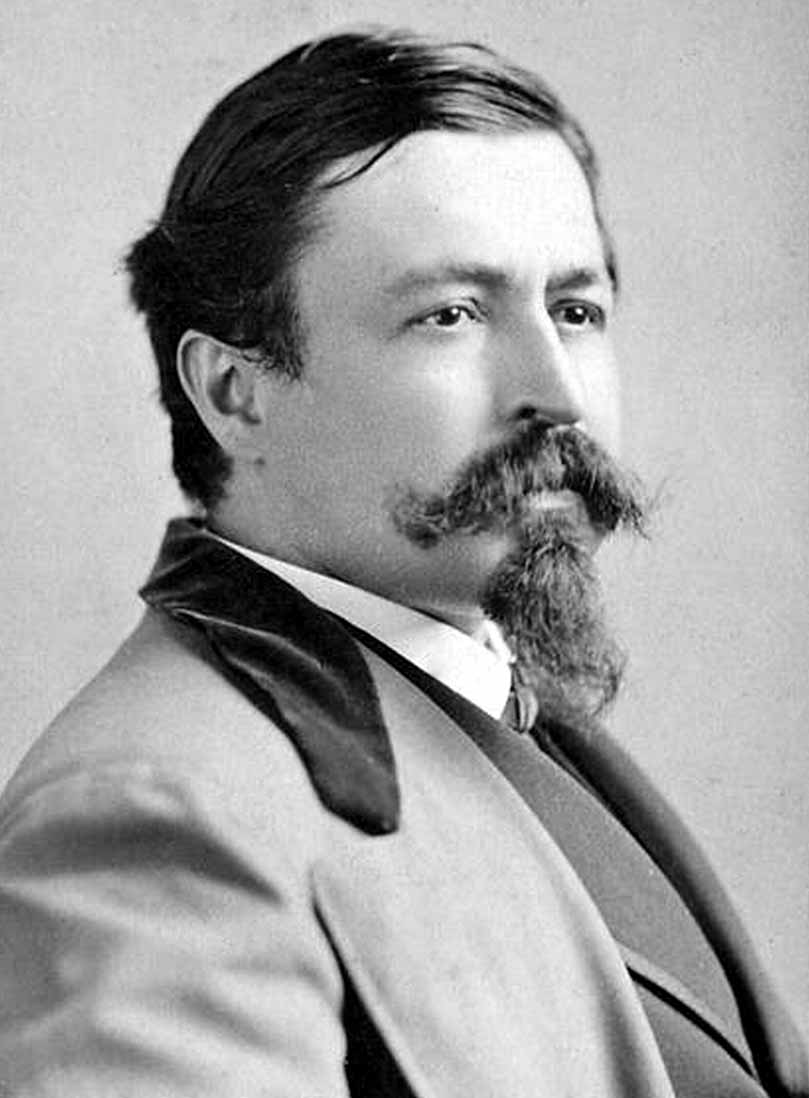
Thomas Nast (1840-1902)
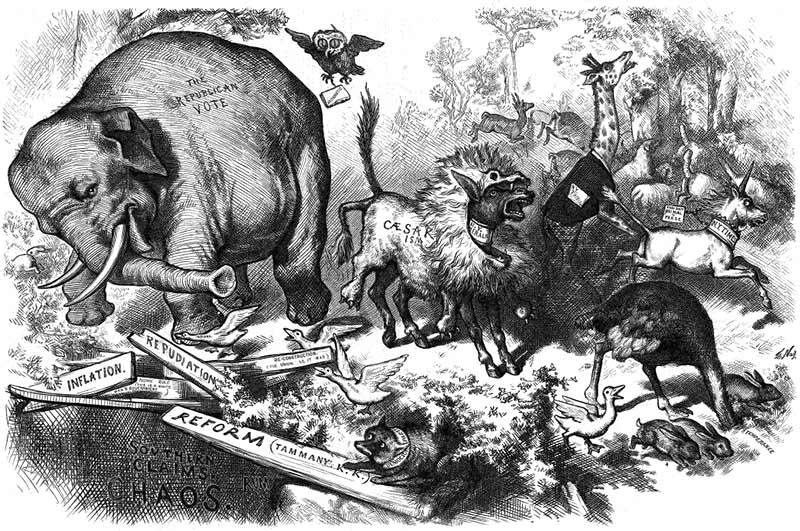
The debut of the Republican Party elephant in the November 7, 1874 issue of Harper’s Weekly
Thomas Nast began life in a military barracks in Landau, Bavaria, where his father was a trombonist with the Bavarian 9th Regimental Band, which seems a most unusual Providence. His father became one of those German rebels who took issue with his national government and decided for safety sake to vote with his feet, sending his family to New York City in 1846. He enlisted to serve on a French man-of-war and then an American one, the details of which are no doubt colorful but unknown.
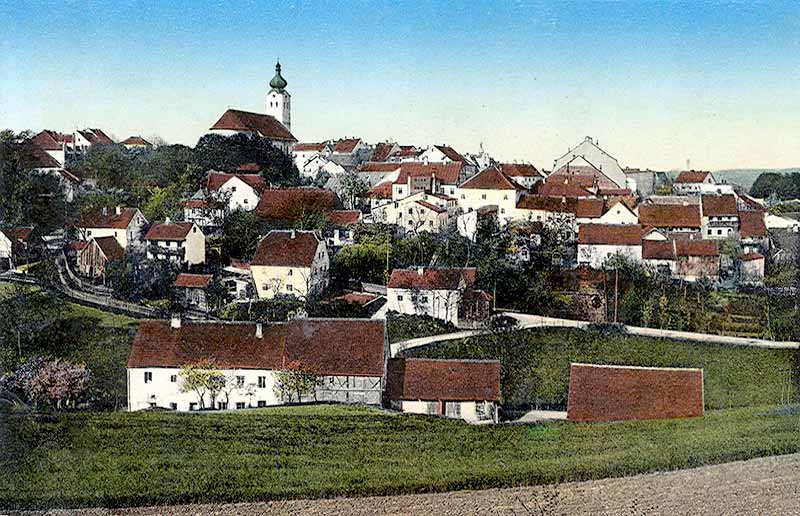
The village of Landau, Bavaria (in present-day Germany), birthplace of Thomas Nast
Thomas attended school in New York City, a slightly built youth, bullied by toughs, and proving to be a rather unpromising scholar. He had a natural talent for drawing, however, and apprenticed for a year with two artists before attending the National Academy of Design. He joined Frank Leslie’s Illustrated Newspaper in 1856. When Nast was 18, his first cartoon appeared in the Harper’s Weekly issue of March 19, 1859, exposing police corruption. The following year Nast received international attention by covering an athletic event in England, and drawing supporting cartoons of Garibaldi’s revolution in Italy. He popularized that unification movement that also attracted the likes of journalist George Alfred Henty.
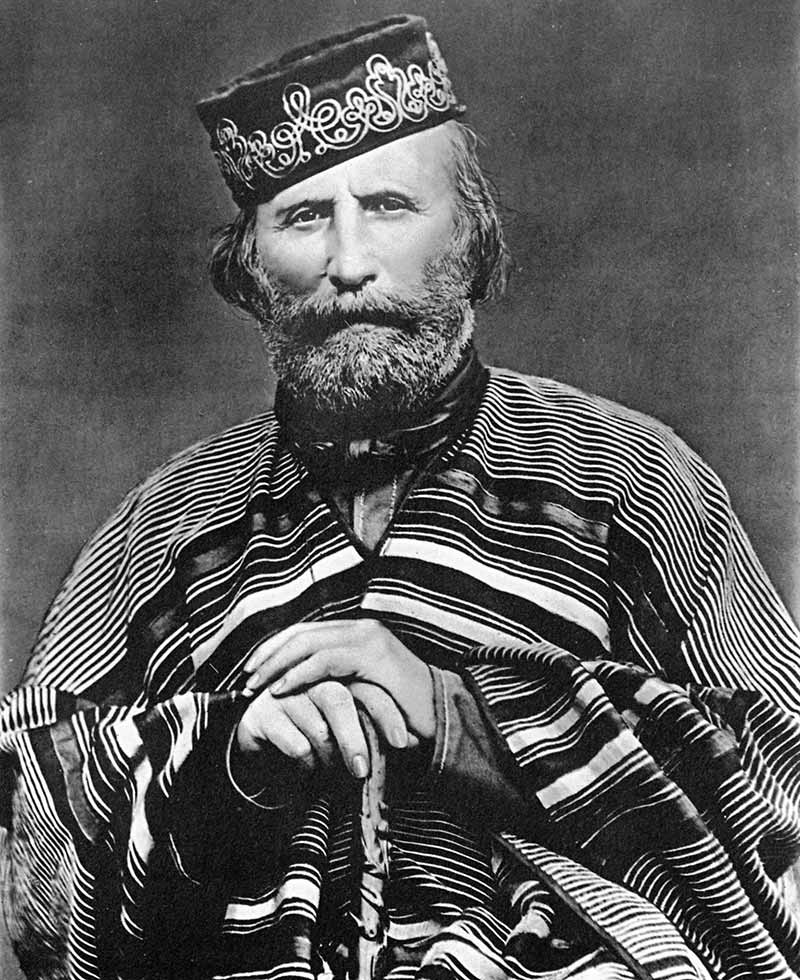
Giuseppe Garibaldi (1807-1882)
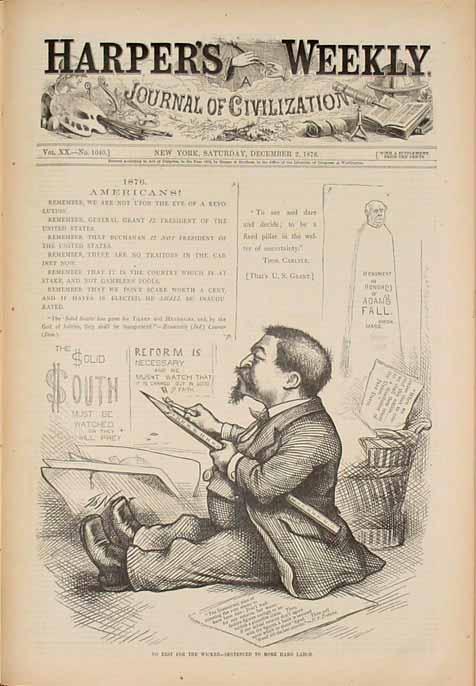
Front cover of Harper’s Weekly for December 2, 1876,
featuring a self-portrait by illustrator Thomas Nast
Nast came into national prominence with the coming of the War Between the States. As a rock-ribbed Republican, hater of the Confederacy, and opponent of Northerners who opposed the war, he joined Harper’s Weekly and produced multiple cartoons related to the war. He also had a decided nostalgic streak, drawing pictures of families praying for their soldiers at the front, soldiers sitting before campfires, and battlefield scenes. President Lincoln called him “our best recruiting sergeant.” Christmas-related themes were among his most popular pieces; he drew the most famous Santa Claus.
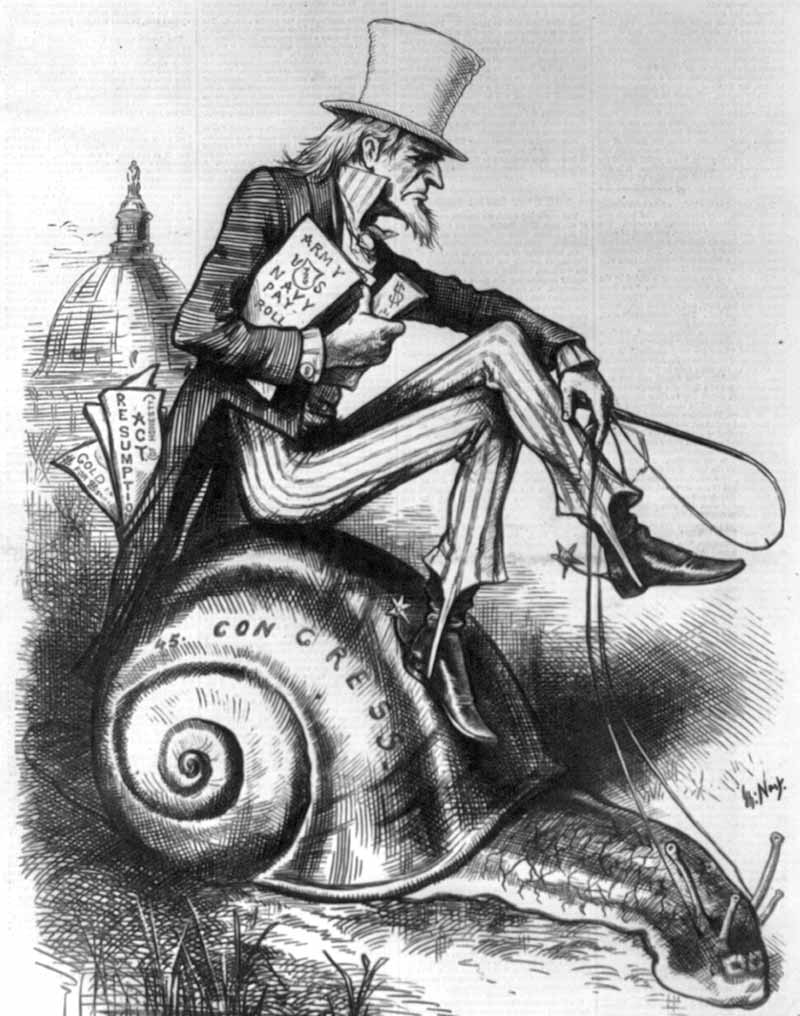
A Nast cartoon depicting the “Lightning Speed of Honesty”
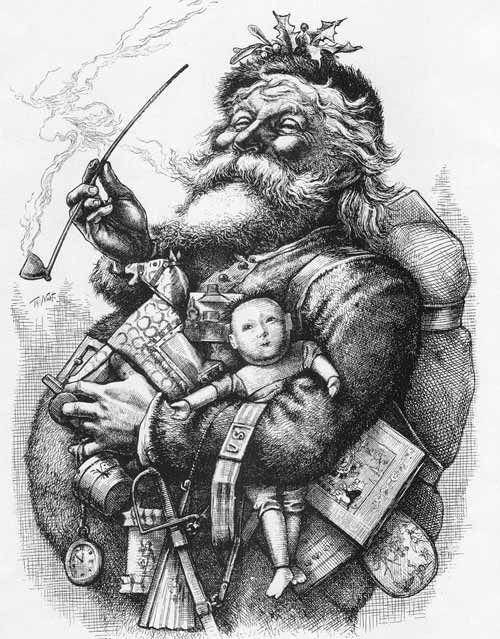
Nast’s now-iconic sketch of “Merry Old Santa Claus”, from the January 1, 1881 edition of Harper’s Weekly
Nast’s real métier came with drawing caricatures, especially of politicians, holding them up to satire and ridicule. He opposed President Johnson’s Reconstruction policies after the war and made sure the country despised any compromises with punishing the South. His sympathies lay especially with the ex-slaves, as well as Indians and Chinese, when popular attitudes bordered on genocide. Nast’s vilification of the South—especially Jefferson Davis—and Northern corrupt politicians was exceeded only by his ridicule of the Irish immigrants, perhaps stemming from his youth, the New York City draft riots in 1863, and the “full paddy-wagons” of the metropolis. Because of his anti-Irish and anti-Catholic biases, he has been cancelled in recent times by the Board of the Thomas Nast Awards and dropped from historical interpretations of the period except as an example of American xenophobia.
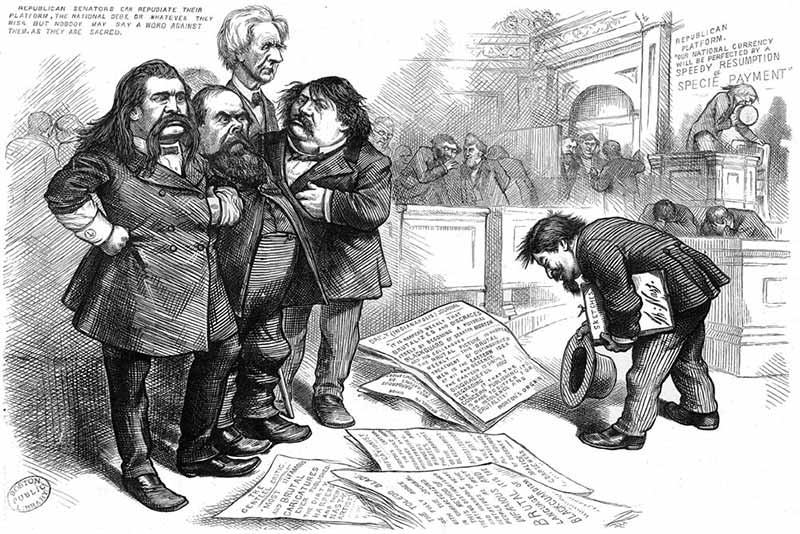
Thomas Nast bows low before the floor of the U.S. Senate in a feigned apology for his cartoons
In the post-war era Nast reigned as the foremost cartoonist in America. He published his own Nast’s Illustrated Almanac while still drawing for Harper’s. He brought down the uber-corrupt Tweed Ring in New York City—some of his best works show Boss Tweed in all his rotundity. Nast supported the presidencies of Lincoln, Grant, Hayes and Cleveland and trashed their opponents with an effectiveness that should be the envy of both political parties today. Nast’s audiences reached up to a million readers, with little appreciable competition.
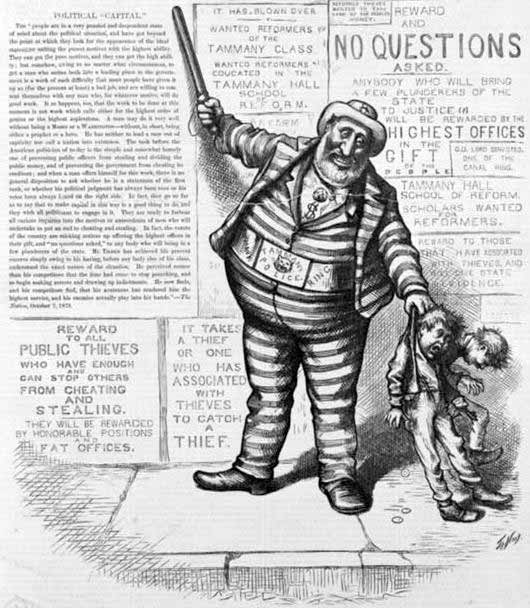
Nast’s depiction of Tweed
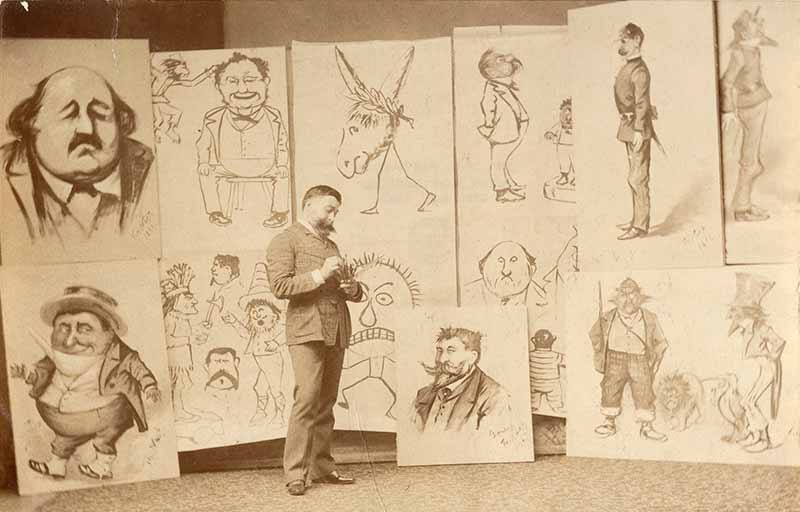
Thomas Nast in his studio surrounded by some of his work, circa 1888
After 1890, the fortunes of Thomas Nast began to wane. He published some popular works, but his arthritic hands restricted his expected out-put. He tried his hand at an Illustrated Weekly but it failed after a half-year run. He produced a few oil paintings on commission and illustrated a few books, but his days as the master-political cartoonist were over. He applied for a job with the State Department and President Theodore Roosevelt, one of his biggest fans, appointed him consul general to Ecuador. He died there in 1902 shortly after arrival from a disease contracted in that country.

Nast in 1902, the year he died
The list of Thomas Nast-drawn symbols still evoke American history and politics, for example the Republican elephant, the Democratic donkey, the Tammany tiger, Uncle Sam, and the famous portrait of General Lee and general Grant at Appomattox. The Thomas Nast award has been given to a “Who’s Who” of the most distinguished cartoonists in American history, especially those of the 20th Century. His biting criticism or support made a huge impact on elections, when the only means of knowing much about the candidates came from the Newspapers, especially the illustrated ones.

A Nast cartoon from 1872 ridiculing Horace Greeley as traitor
So effective was Nast that a rumor still circulates that the word nasty stems from his name. It actually has centuries-old reference in the Dutch and English language. Someone please inform his woke detractors.
Image Credits: 1 Republican Elephant Debut (wikipedia.org) 2 Thomas Nast (wikipedia.org) 3 Garibaldi (wikipedia.org) 4 Landau, Bavaria (wikipedia.org) 5 Self portrait (wikipedia.org) 6 “Lightning Speed of Honesty” (wikipedia.org) 7 Santa (wikipedia.org) 8 Pardon (wikipedia.org) 9 Tweed (wikipedia.org) 10 Studio (wikipedia.org) 11 Nast in 1902 (wikipedia.org) 12 Greeley cartoon (wikipedia.org)



